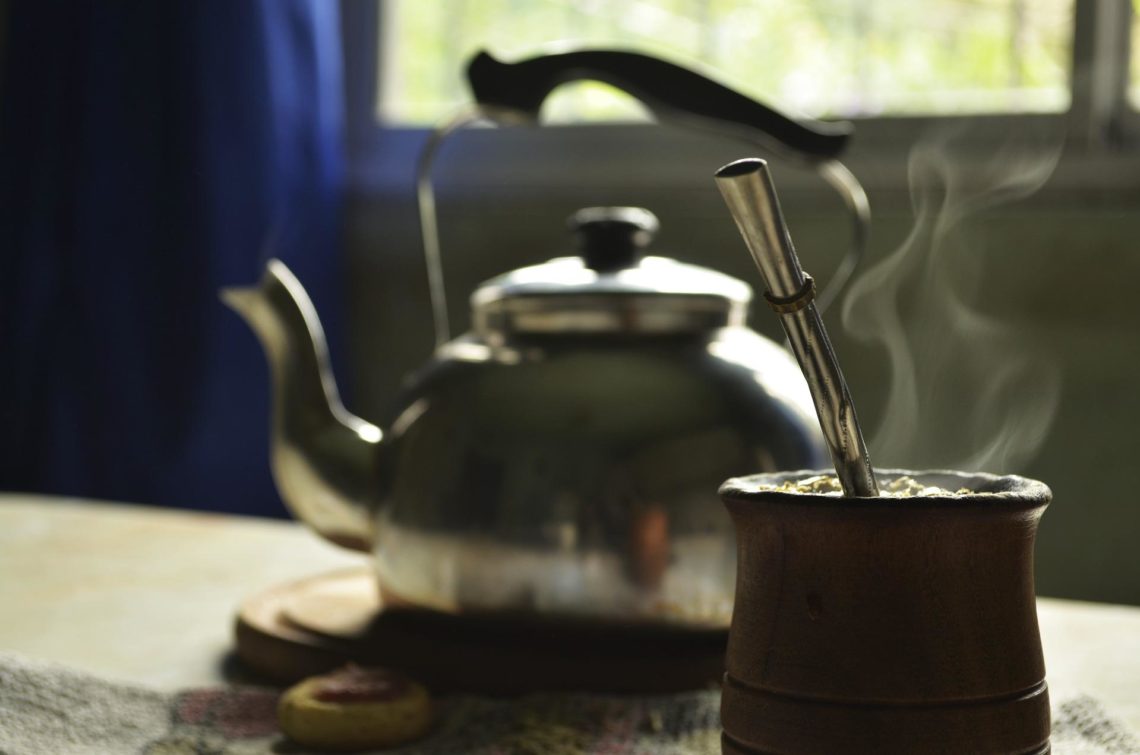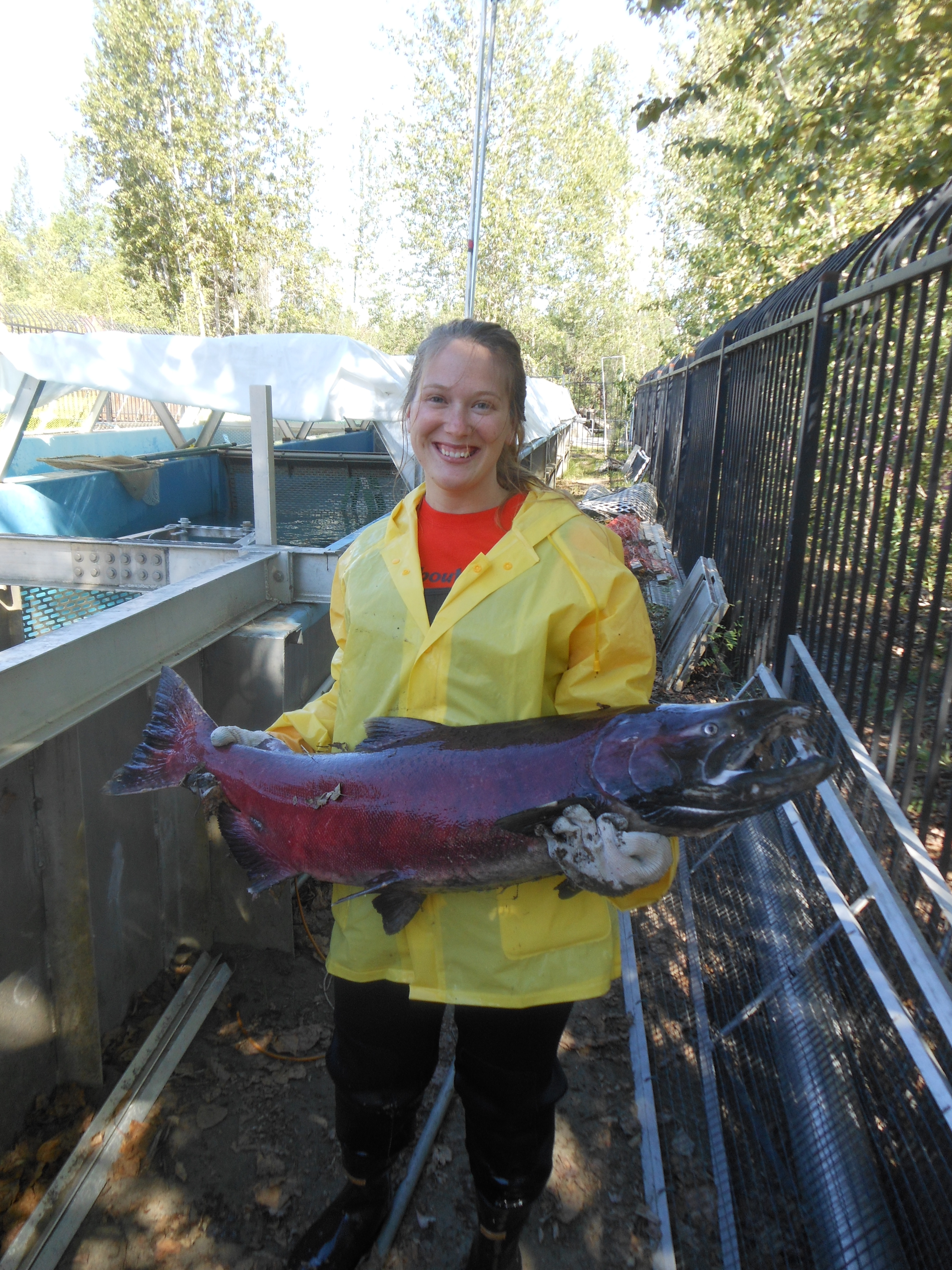By Maria Capezio Crookes
You see, a mate is like a period and a space. You take one and then you can start a new paragraph.
-Julio Cortazar, Rayuela
Mate (pronounced Mah-teh) is a traditional South American drink, brewed from the dried leaves of Yerba Mate (Ilex paraguariensis) in hot water, served in a dried hollow gourd, and briefly steeped. The drink is sucked from the gourd with a metal straw, which is fitted with a strainer at one end to keep leaf particles from the mouth (Encyclopedia Britannica).
***
Drinking mates is ceremony. You can’t hurry it up. There is not such a thing as “let’s drink some quick mates.” It doesn’t work that way. Mates are slow, they can happen anywhere and everywhere. If you find yourself in Argentina, you will be initiated to this tradition as soon as you cross the front door. “Would you like some mates?” is the first question asked after the mandatory greetings. Every successive time, the question is shortened to simply “Mates?” as the host moves to the kitchen and starts the water.
Here is where the ceremony starts: warming up the water in a kettle, setting the mate cup, straw, thermos, and yerba mate. While the water warms up, you fill ¾ of the mate (we refer to the cup simply as “mate”) with yerba, tightly cover the opening with your hand and shake it a few times. Just to help settle things in there. When you remove your hand, a perfect green circle in the palm of your hand reminds you of the jungle where this tradition comes from. From the mate, a tiny cloud of the same green powder rises, offering the earthy and familiar smells of yerba mate, that legend says was given to the Guaraní people by Tupã (Creator).
After shaking the mate, tilt it to create an angle with the yerba. Ideally, at 45˚ from the wall of the cup. By now, the water is warm, but not quite ready. Pour some water in the lower spot where the yerba meets the wall of the mate, and let it sit. While you wait for the water to reach between 70˚C and 80˚C (158˚F and 176˚F), you are already in the middle of the conversation, everyone is sitting in a circle, the mandatory facturas are there, or maybe some galletitas. If you are lucky, along with the conversation, you will be met with the fresh, cheesy smell of chipas1 in the oven.
The way you drink mate follows house rules. In my house, we don’t–ever–use sweeteners, but sometimes we add orange peels and a piece of ginger root, peppermint from our garden in the summer.
Standing in the kitchen, you keep your hands busy while waiting for the water to be hot; people might gather at the kitchen while you prepare everything. When the water is finally hot, and before you put it in the thermos, add some more to the wet spot you created earlier. If you see a soft foam-like formation rise, the temperature is perfect. The sound of the water touching the yerba invites you to sit down and enjoy the company. The steam rising brings with it the smell of the wet yerba, and the expectation of the first mate.
Once the water has been absorbed by the yerba, insert the bombilla (straw) on the spot where you pour the water, making sure you are touching the wall of the mate with the filtered end of the straw. Only pour water against the straw, to make sure the mate lasts long.
***
The plant yerba mate (Ilex paraguariensis) comes from the NE provinces of Argentina and Southern Brazil. In the wild, it can live up to 100 years, and grow as tall as 100 feet. Yerba mate has been used by the Guaraní people for generations. The Jesuits believed that it was a demonic plant, and any use of it implied a pact with the devil (yes, I know).
For the yerba mate to be apt for human consumption, after harvesting the leaves go through a special drying process called Sapecado, using fire from native trees. The leaves are then dried, ground, and stored for 6 months. Depending on the type and brand of yerba, after the storage period, the yerba is classified by size and stem content, packaged, and shipped out.
***
Mates are part of Argentina’s identity. It is woven in every aspect of our lives, every important event, every insignificant encounter. Mates are home, and nostalgia. One of the things about drinking mate is the social aspect of it. There is one mate, one cebador2, and many people around the table. The cebador pours water right by the metal straw and passes it to the person next to them. When that first person is done drinking (you can tell, there is a loud sound that comes with finishing the water in the mate), they return the mate to the cebador, who receives the mate, pours more water, and passes it to the next person. The process is repeated until everyone has been served once. And then, the round starts over again.
You pass the mate around, and the conversation flows.
You pass the mate around, along with the pages of the books you are reading.
You pass the mate around, as you memorize the first 10 articles of the law that regulates safety in the workplace.
You pass the mate around, while you look through pictures of your family and mourn your loved one.
You pass the mate around, while crying because of the miscarriage that happened.
You pass the mate around, while getting into your wedding dress (being careful not to drop it. Mate stains are really hard to wash).
You pass the mate around, while waiting for the baby to be born.
You pass the mate around, and you heart is full.
***
Drinking mates has its own set of rules and etiquette. Break the rules and you will not receive another mate.
1. Mates are drunk as the house drinks it.
2. The person that begins the round as the cebador, pours until everyone is done.
3. Sweet mates have their own and exclusive gourd and straw.
4. The first mate is for the cebador.
5. You never move the straw inside the mate. Only the cebador can do that.
6. You never, absolutely never, blow on the straw.
7. Drink it, and pass it back to the cebador, always with the straw pointing at them.
8. Only say thank you after a mate when it is your last one. If you say thank you before, you will not get another mate.
9. Don’t drink mates with food in your mouth.
10. Don’t take too long to drink when it’s your turn. You will be called out with the saying, “The mate is not a microphone!”
Since the COVID-19 pandemic started, people started carrying their own mate, sharing the thermos instead, keeping the spirit of community and hospitality alive while caring for each other.
***
I don’t know when I started to drink mates. I know I was young.
Kids start drinking mate noticeably young in Argentina. You join in the last couple of mates, near the end of the ceremony, the ones that are washed out and not hot, and as kids grow up, they are included in the round earlier and earlier. My oldest kid drank their first mate at 8 months old, while my parents were visiting. I wanted my parents to have the core memory of Alana tasting the soul-healing drink for the first time. My youngest had her first mate at 9 months, during her first summer, while we were camping in Oklahoma. I wonder now if introducing my kids to a potent (but natural) stimulant was a good idea. But I don’t sit on this question much. I don’t regret the connection my kids have with their Argentinian side through mates.
Mates are also a rite of passage. Because yes, it is usually a social activity. But then, there is the time you prepare the mates to drink alone. Maybe you had a terrible day, or you had to make a decision that needed a lot of thinking, or you had to study alone for the first time. Who knows? The truth is that since the first day you had mates alone, something inside you shifts. Lalo Mir, a journalist from Argentina said it best: “Here [in Argentina] we start being adults when we feel the necessity of drinking some mates by ourselves, alone. It’s not a coincidence.
“The day the child puts the kettle in the fire and drinks their first mate without anyone being at home, in that minute; that means they just found that they have a soul. Or they’re scared to death, or incredibly in love, or something else; but it’s not an average day.”3
For those of us that have left our mate circles to explore and settle in different countries, drinking mates alone means to travel back home. The smell of mates is the smell of many memories. Long afternoons with my abuelo and his sweet mate, even longer nights studying for finals, mornings with my parents, long car rides, conversations that meant nothing, and conversations that changed everything. Mates smell like home.
My siblings and I lived together for several years while in college, each of us doing different things. But, like in my abuelitos’ house, the kitchen was the center of our apartment. At random times, my sister would bring the board with the 2,500 pieces jigsaw puzzle, my older brother would turn the TV on, I’d start the mates. We all sat around the table drinking mates, pretending to watch the TV, and working on the puzzle. Hours later someone would wake us up from the stupor that we were in, not noticing the passing of time, except for how much we advanced on the puzzle. Now we are thankful we can make our own mates across the world and call each other via WhatsApp.
Looking through old pictures, I see that there is a mate in most of them. Sometimes the mate is being held tightly on someone’s hand, while trying to fit in the picture. Other times you can spy the straw poking through the side of the picture. Most times, someone is holding the thermos under one arm, and the mate in the other. A mate half buried in the beach, to make sure it won’t tip over, with all your high school friends around it. A mate and thermos on the side table, guitars in hand, singing completely out of tune. Pictures that hang on my walls and decorate my social media memories.
***
The Guaraní people called the mate cup caiguá (caá=yerba, í=water, guá=vessel), traditionally a dried gourd, sometimes changing its form as the gourd grew on the plant. Now, the mate cup can be found in a variety of materials, like tacuara (cane-type plant), wood, metal, ivory (usually cattle horn), and even bone. Mate cups can be purchased almost everywhere in Argentina; they can have intricate designs, or be remarkably simple. It’s common to receive ornamental mate cups and straws as corporate gifts.
The straws are shaped like a ʃ, they have a filter on the end that is placed inside the mate cup, filtering small pieces of the yerba mate. The top part is flat, helping the water cool as it travels, to avoid burns. Straws can be made of different metals. There is evidence indicating that the Guaraní people used straws made from a type of cane.
***
My favorite version of the legend telling the story of the yerba mate says that, while a tribe was migrating to different lands (some Guaraní tribes were nomads) an old man wasn’t able keep up and decided to settle in a spot of the jungle with his daughter, Yarîi. One afternoon, a stranger approached them. The old men offered food and shelter to the stranger without being asked.
The stranger, who was an emissary of Tupã (Creator), was moved by their generosity and decided to award the man and his daughter, providing them with the means to offer generous entertainment to their guests and to also alleviate their long hours of solitude in the hidden refuge.
He sprouted a new plant in the jungle, naming Yarîi its protective goddess, and her father their custodian, teaching them to sapecar their branches to the fire and to prepare the bitter infusion that would constitute the delight of all visitors. Since then, Caá-Yarîi, and her father Caá-Yará (protector god), care for the new plant, helping it grow fresh and beautiful, using its leaves to prepare mates, the most genuine expression of hospitality.
Since I emigrated from Argentina, drinking mates is one of my direct connections to home, to my family and friends. Preparing mates to go when we drive to Seward for a camping trip, or to Girdwood for the day. Transplanting this ceremony, as some of our friends in Alaska enjoy drinking and sharing mates with us, has been a new way to find a sense of belonging. My heart jumps every time I walk into their home and Laura asks, “Mates?”4
I remember bringing yerba with me when I moved, only drinking mates once a week (or less) for fear of running out of yerba. Grocery stores in Sitka didn’t carry Taraguí brand yerba. I was profoundly thankful that Murray had bought yerba mate during his first visit to Argentina, and that nobody in the family liked to drink it.5
The first time I prepared mates alone in my mother-in-law’s house was sad. It was a beautiful summer morning in Sitka, everyone was at work, I was still trying to find my bearings in a new place, away from everyone I knew. It was one of those rare sunny Southeast days, making the house warm, with a calmness that hung in the air. I had a book and time. I made the mates, loaded everything up in my backpack and headed out to the harbor. Ravens followed for a little while, probably wondering why that short Latina lady was walking on their side of the street.
I found a bench, next to the whale-slide, sat down and started my ceremony. The smell of the mate mixing with the smell of the ocean brought tears that I didn’t know were hiding. I didn’t read that day but mourned the life I left behind, while celebrating the new life I was starting. I was glad the Ravens were not around to see me cry.
***
The Guaraní people used yerba mate as medicine, soaking the leaves for days, and then drinking the resulting liquid to treat intestinal and rheumatic diseases, and to provide energy and strength.
Yerba mate contains many beneficial compounds, like mateina (a chemical similar to caffeine), a good source of antioxidants, vitamin C, magnesium, potassium, calcium, and many other vitamins and minerals.
Modern research continues to confirm what the Indigenous people of NE Argentina have known for hundreds of years: drinking mates carries a lot of health benefits. Yerba mate reduces anxiety, prevents mental and physical tiredness, boosts energy and concentration capacity, helps to control weight, reduces cholesterol, protects liver function, acts as a natural diuretic, and in excessive amounts might function as laxative. There are many, many benefits from drinking mates regularly, and from utilizing it in medicine development.
***
These many years later, when I have a difficult day, there is nothing like asking Murray to prepare mates for us to enjoy in silence. Or while he hears me vent and work through my anger. In the past 15 years we have shared mates in random places, at home, in the car, waiting for our babies to be born, studying. Mates have the power of bonding and healing our souls.
Not long ago, I started teaching my own children how to prepare mates, making sure to talk about the right angle of the yerba in the mate, of the patience it takes to wait for the water to warm up, the attention you need to pay when you are the cebador, and the rhythm you need to pour just the right amount of water in the mate (don’t drown it!), guiding their hand as they place the straw in the mate for the first time.
Watching them prepare their first mate was nerve racking. The water was hot, I was afraid they were going to burn themselves, pour too much water on the first mate, drop everything. As I was keeping a close eye, I realized that one day they will start the kettle and make mates just for them. And they will be all grown. So, I stepped back, and let them help each other and prepare the afternoon mates for the family.
We are starting a batch of chipas now. The smell of the fresh batch of amazing cheesy, doughy, chewy rolls will inundate our home, inviting everyone to sit around the table and wait for their turn to drink a mate.
1Small baked cheese flavor rolls.
2The person that pours the water and is in charge of the mate.
3Lalo Mir is an Argentinian journalist. He read “Reflections about Mate” on his morning radio show “Lalo Bla.” Translated by the author, pronouns modified to make the passage gender neutral.
4Yes, we gifted them a mate set with a kilo of yerba for Christmas.
5My husband, Murray, visited Argentina as an exchange student in 2002. He brought back 12 kg of yerba to give to family and friends.





